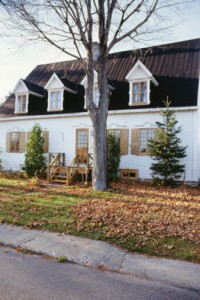Leaking Roof Repair and Early Detection: How to Prevent an Unwanted Indoor Pool
August 19, 2013 7:25 amEven though autumn in Oklahoma is usually warm with little rain, it’s still Oklahoma: unpredictable and dangerous. Having a leaking roof may be a scenario you’ve gladly put at the back of your mind; after all, why worry about something if you don’t have to? With the kids just getting back to school and football season just starting up, harmful storms seem a distant possibility.

Detecting a potential leak in your roof early—sometimes before it can even happen—could be the difference between breaking your budget on a new roof or spending a weekend doing a few simple repairs. Which would you rather?
Determine Your Risk
Any roof—no matter how well constructed—can fall victim to leaking. While the construction of your home may be perfect, the shingles could have been laid poorly, leading to leaks that will be difficult to detect. Adversely, your roofing may be laid perfectly, but have poor construction underneath that can lead to disastrous, expensive leak damage.
Poor roof design may be the culprit in your own leaking roof: a large number of valleys or odd pitches can cause water to pool in large amounts in unusual places. If the water can run off your roof, it still has to go somewhere: inside your home. The plywood beneath the shingles will slowly become soft, which can also lead to mold. If you have any say, you may swap an interesting, aesthetically pleasing roof design for one that’s less risky.
Ground movement may also play a part in poking holes into your roof. The dry, dry heat that Oklahoma is known for causes the ground to shift and settle which also shifts the homes sitting on it. As your house moves, you can bet your roof moves with it: this leads to a lot of unstable joints and loose stability. While there isn’t much you can do to prevent this from happening, you can have your roof inspected following especially dry spells to get a heads-up on any potential leaks.
Certain aspects of your home may also be giving you a higher probability of developing leaks. Skylights and chimneys are wonderful to have inside your home, and certain plumbing pipes may need to go through the roof, but they are difficult for your roofer to work around. Perfectly sealing the roof around these is almost impossible to guarantee, which means they may develop leaks over time. This can’t be avoided, but it can certainly be inspected regularly during maintenance to ensure you stop the leak before it even starts!

Seeing the Signs
You may think you’ll know you have a leak when you suddenly come home to an indoor swimming pool, but not all leaks drip all the way inside. Depending on the cause of the leak and condition of your roof, you may have water dripping into the structure of your home. This can cause damage to the sheet rock, warp or fading paint, even growing mold.
Leaks aren’t always caused by rainwater, either: snow, ice, and hail can all melt and drip inside. Even if your home has never suffered a drop of water, it may still have water damage: stop puzzling over the odd stain on the ceiling and understand that it’s water damage.
Any sign of water damage—even if you have nothing but a bad feeling to go off of—should have you on the phone to your roofer immediately. A leak is similar to your roof catching a cold: if you don’t treat it properly and promptly, the sickness will spread to the rest of the roof. While roofing repairs can be expensive, it’s certainly cheaper than replacing your entire roof! If you suspect a leak, or simply want an inspection to be safe, let us help!

